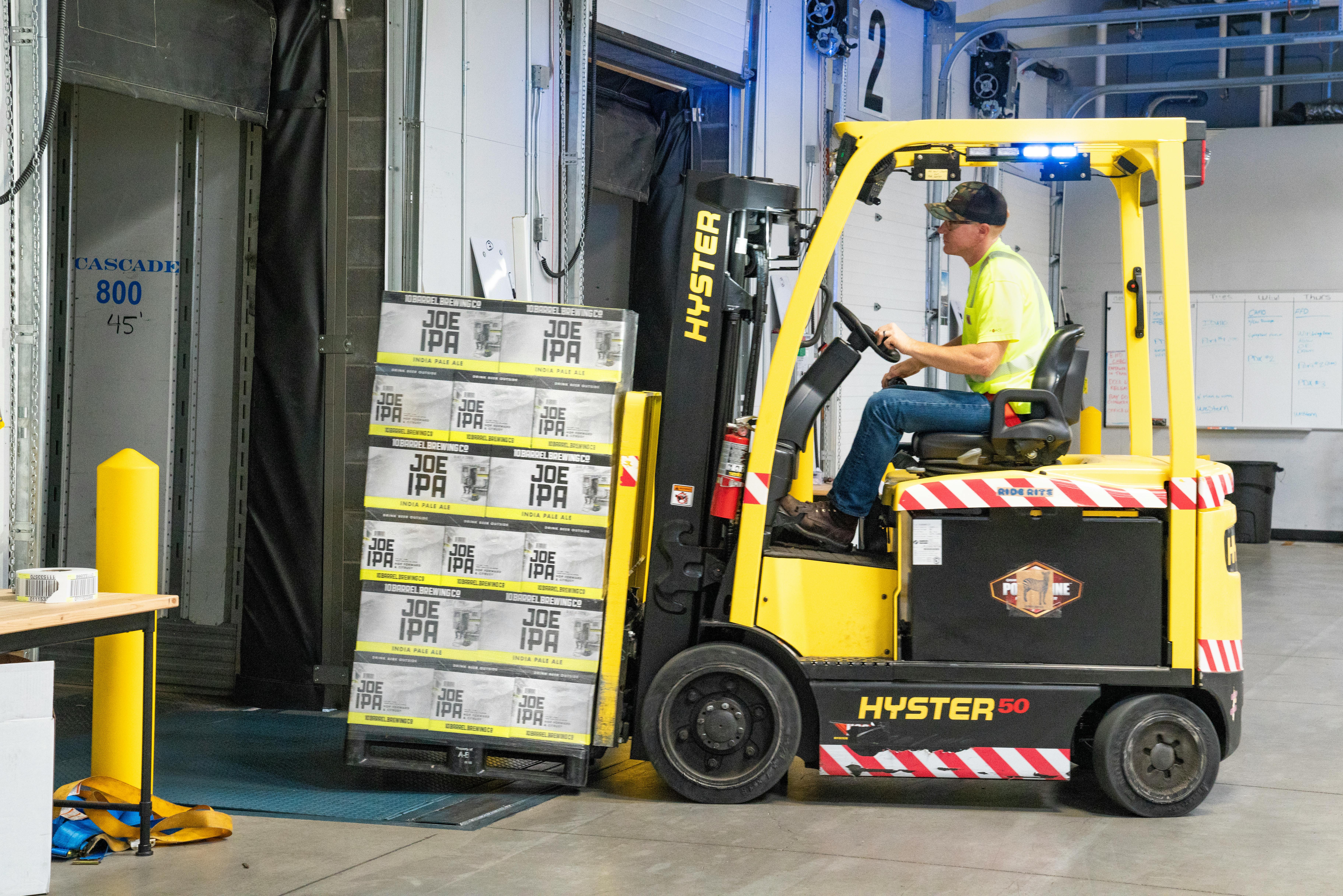
What is Basis in Commodity Trading? Spot-Futures Relationship Explained
Master the concept of basis in commodity trading—the critical difference between spot and futures prices. Essential knowledge for hedgers, traders, and investors.
In commodity markets, the relationship between spot and futures prices isn't just important—it's the foundation upon which hedging strategies, arbitrage opportunities, and trading decisions are built. This relationship has a name: basis. While it might sound like dry technical jargon, basis is actually one of the most practical and actionable concepts in commodity trading.
Understanding basis transforms you from someone who merely watches prices to someone who understands price relationships. Farmers use basis to time crop sales. Oil refiners use it to manage inventory. Traders use it to identify arbitrage opportunities. Whether you're hedging commercial operations or speculating on markets, mastering basis gives you insights that simple price watching cannot provide.
Basis at a Glance
Positive Basis
Spot > Futures
Backwardation / Strong demand
Negative Basis
Futures > Spot
Contango / Carrying costs
Formula: Basis = Spot Price - Futures Price
What is Basis in Commodity Trading?
Basis is the difference between the spot price (cash price) of a commodity and the price of a futures contract for that same commodity. It's expressed as a simple mathematical relationship:
Basis = Spot Price - Futures Price
This seemingly simple calculation captures a wealth of information about current market conditions, supply-demand dynamics, storage economics, and price relationships.
Understanding the Calculation
Example 1: Positive Basis
- Corn spot price: $6.50 per bushel
- December corn futures: $6.20 per bushel
- Basis: $6.50 - $6.20 = +$0.30 (or "30 cents over")
A positive basis means spot prices exceed futures prices. This is called "over" basis or trading "over the futures."
Example 2: Negative Basis
- Crude oil spot price: $85.00 per barrel
- Front-month futures: $87.50 per barrel
- Basis: $85.00 - $87.50 = -$2.50 (or "2.50 under")
A negative basis means futures prices exceed spot prices. This is called "under" basis or trading "under the futures."
Why Basis Matters
Basis is crucial because:
- Hedging effectiveness: Basis determines how well futures hedges protect against price changes
- Convergence tracking: Basis must move toward zero as futures approach expiration
- Arbitrage identification: Wide basis can signal profit opportunities
- Supply-demand signals: Basis changes reveal shifting market conditions
- Location differences: Basis captures price variations across geographic locations
Types of Basis
1. Temporal Basis (Time Basis)
The most common form of basis compares current spot prices to futures prices for a specific contract month. This temporal basis reflects the cost of carrying inventory from now until the futures contract delivery date.
Components of temporal basis:
- Storage costs: Warehousing, tank fees, or silo charges
- Insurance: Protection against loss or damage
- Financing costs: Interest on capital tied up in inventory
- Convenience yield: Value of having immediate physical possession
2. Location Basis (Geographic Basis)
Location basis compares prices for the same commodity in different geographic locations. Futures contracts specify delivery locations, but physical commodities exist everywhere, creating location-specific basis.
Example:
- WTI crude futures (Cushing, OK delivery): $85.00 per barrel
- WTI spot in Houston: $86.50 per barrel
- Houston basis: +$1.50 (Houston trades at premium to Cushing)
Location basis reflects:
- Transportation costs between locations
- Regional supply-demand imbalances
- Local storage availability
- Quality differences
3. Quality Basis (Grade Basis)
Futures contracts specify standard grades or qualities. Physical commodities that differ from contract specifications trade at premiums or discounts, creating quality basis.
Example:
- Wheat futures specify hard red winter wheat
- Soft red winter wheat trades at a discount
- High-protein hard red spring wheat trades at a premium
Positive vs Negative Basis: What Each Indicates
Positive Basis (Spot > Futures)
When spot prices exceed futures prices, creating positive basis, the market is signaling:
Market Conditions:
- Immediate supply shortage: Current supply can't meet demand
- Strong current demand: Buyers need commodity now, not later
- Low inventories: Little buffer between supply and demand
- Backwardation: The market is in backwardation structure
- High convenience yield: Physical possession valued highly
Implications:
- For producers: Favorable conditions for selling spot inventory at premium prices
- For consumers: Expensive to buy spot; might prefer futures contracts for future needs
- For traders: Potential for selling spot and buying futures (cash-and-carry arbitrage if spreads justify it)
Negative Basis (Futures > Spot)
When futures prices exceed spot prices, creating negative basis, the market is signaling:
Market Conditions:
- Adequate current supply: No immediate shortage
- Normal carrying costs: Storage and financing costs priced in
- Contango structure: The market is in contango
- Inventory abundance: Ample stocks available
- Low convenience yield: Little urgency for immediate possession
Implications:
- For producers: Can hedge future production at attractive futures prices that exceed spot
- For consumers: Spot purchases more attractive than futures; might buy inventory now
- For traders: Potential for buying spot and selling futures if spread exceeds carrying costs
Basis Convergence: The Iron Law of Futures Markets
One of the most reliable principles in commodity markets is basis convergence: as a futures contract approaches expiration, the basis must converge toward zero. At expiration, futures and spot prices must be essentially equal.
Why Convergence Occurs
Convergence is enforced by arbitrage. Think about it: on the last day of a futures contract, you're agreeing to buy/sell something "in the future"—but that future is now today. The futures contract and spot commodity represent the same thing: immediate ownership.
If futures traded significantly above spot at expiration, arbitrageurs would:
- Buy spot commodity at the lower price
- Sell futures at the higher price
- Deliver the spot commodity against the futures contract
- Pocket the difference as risk-free profit
This arbitrage activity eliminates any significant basis at expiration, forcing convergence.
Tracking Basis Convergence
As expiration approaches:
- Positive basis: Basis narrows—either spot falls or futures rise
- Negative basis: Basis narrows—either futures fall or spot rises
- At expiration: Basis should be near zero (allowing for minor delivery costs)
This convergence is why holding futures to expiration eventually realizes the full price relationship, making basis risk temporary rather than permanent.
Basis Risk: The Hidden Danger in Hedging
While futures contracts are powerful hedging tools, they don't provide perfect protection. The culprit? Basis risk—the risk that the basis will change between when you establish a hedge and when you lift it.
How Basis Risk Affects Hedging
Example: A Farmer's Hedge
In April, a corn farmer plans to sell harvest in October:
- October corn futures: $6.00 per bushel
- Local spot price: $5.70 per bushel
- Current basis: -$0.30 (30 cents under)
The farmer sells (shorts) December corn futures at $6.00 to hedge, expecting to realize approximately $6.00 minus the typical $0.30 basis = $5.70 at harvest.
Scenario 1: Basis Remains Stable
At harvest in October:
- December futures: $5.00 (prices fell $1.00)
- Local spot price: $4.70
- Basis: -$0.30 (unchanged)
Hedge result:
- Physical sale: $4.70 per bushel
- Futures profit: $6.00 - $5.00 = $1.00 gain
- Net received: $4.70 + $1.00 = $5.70 per bushel (as expected)
The hedge worked perfectly because basis remained stable.
Scenario 2: Basis Weakens (Negative Basis Risk)
At harvest in October:
- December futures: $5.00
- Local spot price: $4.40 (basis weakened to -$0.60)
- Basis: -$0.60 (deteriorated by $0.30)
Hedge result:
- Physical sale: $4.40 per bushel
- Futures profit: $6.00 - $5.00 = $1.00 gain
- Net received: $4.40 + $1.00 = $5.40 per bushel (30 cents less than expected)
The farmer received 30 cents less per bushel due to unfavorable basis movement—basis risk materialized.
Managing Basis Risk
While basis risk can't be eliminated, it can be managed:
- Study historical basis patterns: Understand typical basis for your location and time of year
- Use basis contracts: Some markets offer basis-only contracts that separate price and basis risk
- Choose appropriate contract months: Hedge using contract months that align with your physical marketing
- Monitor basis changes: Track basis regularly and adjust hedges if unusual conditions develop
- Accept residual risk: Understand that basis risk is typically much smaller than outright price risk
Why Understanding Basis Matters for Trading and Investing
For Commodity Hedgers
Producers and Consumers: Basis knowledge transforms hedging from crude price protection into precise risk management. Understanding local basis patterns helps you:
- Time sales and purchases optimally
- Choose the right futures contract months
- Forecast likely net prices received or paid
- Identify when to establish or lift hedges
- Negotiate basis contracts with buyers or suppliers
For Traders and Speculators
Arbitrage Opportunities: Basis trading—buying and selling to profit from basis changes—offers lower-risk opportunities than directional bets:
- Basis widening trades: When you expect basis to become more positive or less negative
- Basis narrowing trades: When you expect basis to converge toward zero
- Cross-location arbitrage: Exploiting location basis discrepancies
For Commodity ETF Investors
Understanding Roll Yield: Basis is directly related to roll yield. When basis is negative (contango), commodity ETFs suffer negative roll yield. When basis is positive (backwardation), ETFs benefit from positive roll yield. Monitoring basis helps ETF investors:
- Time entries and exits for optimal term structure conditions
- Understand why ETF returns diverge from spot prices
- Choose between futures-based and physically-backed commodity exposures
For Agricultural Market Participants
Seasonal Basis Patterns: Agricultural commodities show predictable seasonal basis patterns:
- Pre-harvest: Basis typically strengthens (becomes more positive) as old-crop supplies dwindle
- Harvest: Basis typically weakens (becomes more negative) as new supply floods market
- Storage season: Basis reflects storage costs and expected future demand
Farmers who understand these patterns time sales to capture strong basis periods, maximizing revenue.
Real-World Examples of Basis in Action
Example 1: Corn Basis During Harvest Glut
Situation: September harvest arrives with record yields
- December corn futures: $5.50 per bushel
- Local elevator cash price: $4.80 per bushel
- Basis: -$0.70 (70 cents under)
Why basis is so negative: Elevators are overwhelmed with corn. Storage is full. Transportation is constrained. Buyers have leverage—they know farmers need to sell immediately.
Strategy: Savvy farmers with storage capacity avoid selling at weak basis. Instead, they store corn and sell futures, locking in the $5.50 price. They'll sell physical corn later when basis strengthens, potentially recovering 30-40 cents per bushel.
Example 2: Crude Oil Location Basis Blowout
Situation: Pipeline outage from Cushing, Oklahoma (WTI delivery point) to Gulf Coast refineries
- WTI futures (Cushing): $75.00 per barrel
- WTI spot at Cushing: $73.00 per barrel (discount due to stranded oil)
- WTI spot on Gulf Coast: $78.00 per barrel (premium due to supply disruption)
Basis patterns:
- Cushing basis: -$2.00 (under futures)
- Gulf Coast basis: +$3.00 (over futures)
- Cross-location basis: $5.00 difference
Opportunity: Traders with transportation access can buy Cushing oil at $73, transport to Gulf Coast, and sell at $78—capturing the $5 spread minus transport costs.
Example 3: Natural Gas Winter Demand Basis Surge
Situation: Polar vortex drives extreme heating demand in Northeast
- Henry Hub natural gas futures: $4.00 per MMBtu
- Northeast spot (Algonquin): $20.00 per MMBtu
- Basis: +$16.00 (massive premium)
Why extreme basis: Pipeline constraints limit gas flow to Northeast. Extreme cold drives huge demand. Local storage nearly empty. Utilities desperately need gas immediately and will pay enormous premiums.
Lesson: Location basis can explode under stress conditions when transportation infrastructure constrains supply.
Common Misconceptions About Basis
Misconception 1: "Basis Should Always Be Negative"
Reality: While negative basis (contango) is "normal" for many storable commodities, positive basis (backwardation) occurs regularly in energy markets, during supply disruptions, or when demand is strong. Neither is inherently abnormal.
Misconception 2: "Hedging Eliminates All Price Risk"
Reality: Hedging eliminates futures price risk but not basis risk. Your final net price depends on both futures price and basis at the time you transact in the physical market. Basis risk remains.
Misconception 3: "Basis Only Matters for Farmers"
Reality: Basis affects every commodity market participant—producers, consumers, traders, speculators, and investors. Understanding basis improves decisions regardless of your role.
Misconception 4: "Futures and Spot Prices Are the Same Thing"
Reality: Futures and spot prices differ by basis, which reflects time, location, quality, and market conditions. Treating them as identical ignores crucial information.
Misconception 5: "Basis Is Unpredictable"
Reality: While basis fluctuates, it shows patterns—seasonal patterns, convergence toward zero at expiration, and typical ranges for given locations and times. Historical analysis makes basis somewhat predictable.
Key Takeaways
- Basis is the difference between spot and futures prices, calculated as Spot Price - Futures Price
- Positive basis (spot > futures) indicates backwardation with strong current demand or supply shortages
- Negative basis (futures > spot) indicates contango with adequate supply and normal carrying costs
- Basis must converge to zero at futures expiration, enforced by arbitrage
- Basis risk is the risk that basis will change between establishing and lifting a hedge
- Location basis captures geographic price differences due to transport costs and regional supply-demand
- Understanding basis improves hedging effectiveness for producers and consumers
- Basis patterns show seasonality in agricultural markets and can be analyzed historically
- Basis trading offers lower-risk profit opportunities than outright directional speculation
- Monitoring basis is essential for anyone trading, hedging, or investing in commodities
Related Topics on SpotMarketCap
Conclusion
Basis might seem like a technical detail—a simple subtraction of one price from another. But this "simple" calculation captures essential market information that drives real-world profitability for millions of market participants. The farmer deciding when to sell corn, the oil refiner managing inventory, the trader seeking arbitrage—all depend on basis understanding for success.
The power of basis lies in its specificity. Unlike vague notions of "supply and demand," basis gives you a precise, quantifiable measure of the relationship between spot and futures markets. It tells you not just that prices are rising or falling, but how the present relates to the future, how one location compares to another, how current conditions differ from market expectations.
For hedgers, basis understanding transforms crude risk management into precise strategy. You're no longer simply "locking in a price"—you're managing both futures price risk and basis risk, understanding how they interact, and making informed trade-offs between them. This sophistication separates effective hedgers from those who blindly use futures without understanding what protection they're actually getting.
For traders, basis analysis opens up an entire dimension of opportunities beyond simple directional bets. Basis trading, location arbitrage, seasonal pattern exploitation—these strategies often offer better risk-reward profiles than trying to predict whether prices will rise or fall.
The next time you look at commodity prices, don't just check the spot price or futures price in isolation. Calculate the basis. Ask yourself: Is this basis typical for this time and place? Is it widening or narrowing? What does it tell me about current market conditions? These questions, informed by basis analysis, will lead you to insights that simple price-watching never reveals.
Track Real-Time Asset Prices
Get instant access to live cryptocurrency, stock, ETF, and commodity prices. All assets in one powerful dashboard.
Related Articles

What is Normal Backwardation? Keynes' Theory Explained
Discover John Maynard Keynes' theory of normal backwardation and how risk premiums compensate speculators in commodity futures markets. Essential economics explained.

What is Convenience Yield? Why Storing Commodities Matters
Learn about convenience yield—the hidden value of holding physical commodities. Understand how it affects futures prices, backwardation, and commodity investment returns.

What is Physical Settlement vs Cash Settlement in Commodities?
Understand physical delivery versus cash settlement in futures contracts. Learn how settlement methods affect traders, hedgers, and commodity market participants.